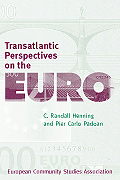Studies in this week’s Hutchins Roundup find that ECB recent large-scale asset purchases, also known as quantitative easing, have managed to raise inflation in the euro area, the cost of treating cancer has increased but so has cancer patients’ life expectancy, and more.
Recent large-scale asset purchases by ECB have raised inflation in the euro area
Focusing on the four largest euro area economies, Tobias Blattner and Michael Joyce of the European Central Bank (ECB) conclude that the ECB Asset Purchase Program–large-scale asset purchases, especially of government bonds, announced in early 2015–put downward pressure on euro area government bond yields by reducing the amount of bonds available to private investors, which in turn lowered interest rates, stimulated economic activity and raised inflation. Specifically, they estimate that the policy may have reduced euro area long-term bond yields, on average, by 30 basis points in 2015 and raised the inflation rate by 0.3 percentage point in 2016. The authors note that these estimates may understate the total impact of the ECB program because they do not capture any effects of the asset purchases on credit risk or monetary policy expectations.
Meaningful improvements in survival accompanied increases in the cost of treating cancer
Comparing the life expectancy and Medicare reimbursements of cancer patients diagnosed in 1996–2000 and 2007–11, David Howard of Emory and co-authors find that increases in treatment costs were accompanied by increases in life expectancy. For example, lifetime medical costs for breast cancer patients increased by $72,200 over this time period while average life expectancy increased by about 13 months. The authors conclude that most of the changes in life expectancy were due to the adoption of new anticancer drugs, and note that these drugs appear to be worth their cost.
The resurgence of downtown neighborhoods has been driven by an influx of college educated whites
Downtown neighborhoods have experienced remarkable rebounds in population and residents’ socioeconomic status since 2000, following two decades of decline. Nathaniel Baum-Snow of the University of Toronto and Daniel Hartley of the Chicago Fed examine the causes of these trends. They find that the population decline in downtown neighborhoods during 1980-2000 was driven primarily by departures of residents of all races without a college degree, and the rebound in population in the post-2000 period was driven by the return of college educated whites and a halt in the outflows of less educated whites. However, the flight of minorities out of downtown neighborhoods continues, they find. These shifts were triggered by the combination of increases in housing prices and changes in local amenity values for each demographic group.
Chart of the week: Poverty declined for all age groups in 2015

Quote of the week: “In today’s new normal, the costs to the economy of greater-than-expected strength in demand are likely to be lower than the costs of significant unexpected weakness,” says Federal Reserve Board governor Lael Brainard
“In the case of unexpected strength, we have well-tried and tested tools and ample policy space in which to react. Moreover, because of Phillips curve flattening, the possibility of remaining labor market slack, the likely substantial response of the exchange rate and its depressing effect on inflation, the low neutral rate, and the fact that inflation expectations are well anchored to the upside, the response of inflation to unexpected strength in demand will likely be modest and gradual, requiring a correspondingly moderate policy response and implying relatively slight costs to the economy. In the face of an adverse shock, however, our conventional policy toolkit is more limited, and thus the risk of being unable to adequately respond to unexpected weakness is greater. The experience of the Japanese and euro-area economies suggest that prolonged weakness in demand is very difficult to correct, leading to economic costs that can be considerable.”








Commentary
Hutchins Roundup: Quantitative easing, cancer treatment, and more
Thursday, September 15, 2016